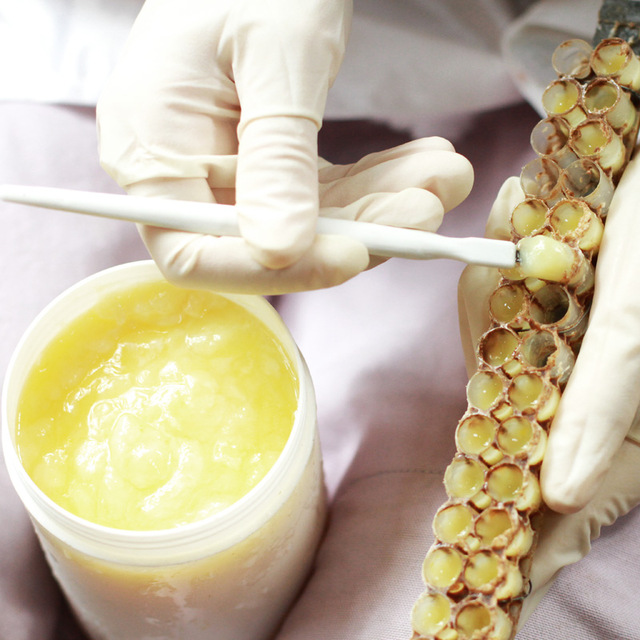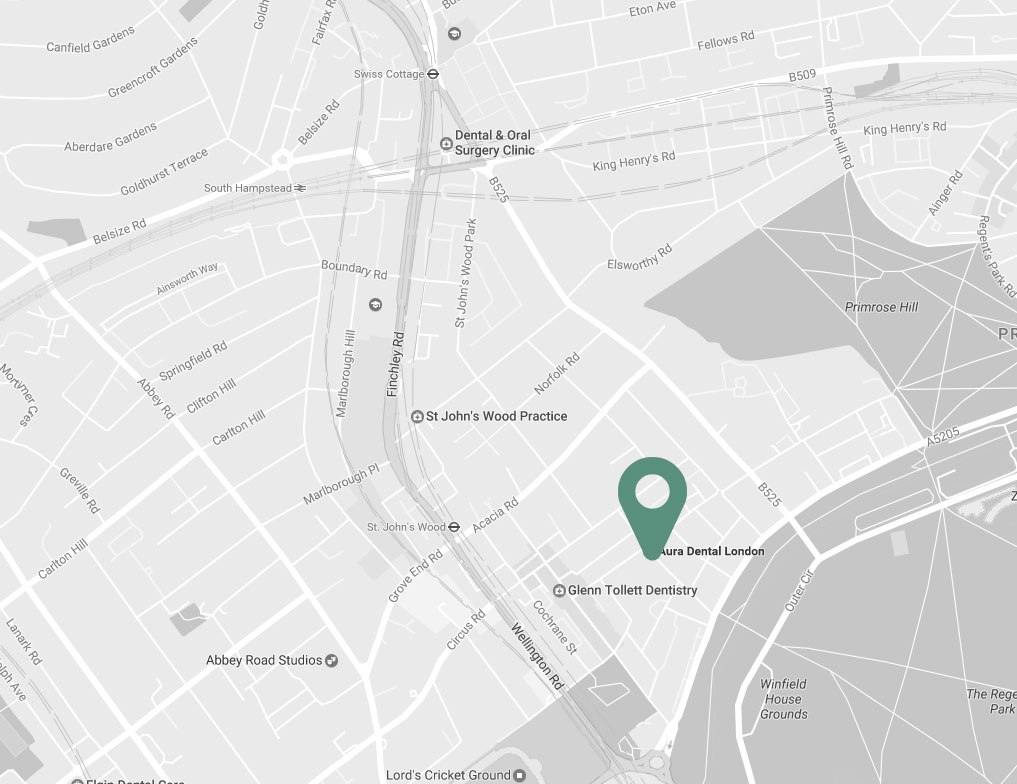
History
Historically, one of the most valued groups of natural medicines is that of bee pollen, propolis, and royal jelly. Royal jelly is a unique, thick, milky substance that the worker bees manufacture and feed to the Queen bee. It is the sole source of nutrition of the Queen bee and aids their everyday vitality. The worker bees mix honey and bee pollen with enzymes in the glands of their throats to produce royal jelly.
Benefits and composition
Royal jelly is believed to be a useful nutritional supplement because of the Queen bee’s superior size, strength, stamina, fertility rates and longevity compared with other bees.
Royal jelly’s composition is similar to pollen. It contains calories as it’s full of nutrients, all eight essential amino acids, vitamins, minerals and hormonal-like substances. It is high in pantothenic acid (Vitamin B5), the anti-stress vitamin and has been shown in studies to increase endurance whilst under stress. It contains approximately 12% protein, 5% to 6% lipids, and 12% to 15% carbohydrates.
Royal Jelly, historically linked to fertility, is a naturally rich source of amino acids, vitamins A, C, D, E and B complex vitamins. Fresh royal jelly also possesses numerous health benefits. There is yet however insufficient testing on how effective this is in human fertility. RJ also contains beneficial probiotics!
Royal jelly helps prevent illness and combats the stress on the body caused by vaccines.
It needs to be kept in the fridge to keep its bioactive compounds preserved.
Healing properties
1. Boosts the immune system, in general, and heals mucositis, in particular. Just like honey it also improves asthma rates.
2. Studies have shown a cholesterol and lipoprotein-lowering effect of royal jelly, as well as triglyceride lowering and HDL-increasing, conferring a benefit on cardiovascular health.
3. Improves blood’s glucose levels, as well as ulcerations related to diabetes.
4. Improves anaemia rates by slightly increasing the number of red blood cells.
5. Increases testosterone levels in men that regularly consume it, as well as improving sperm quality. RJ has also been shown to have a positive impact on the FSH/LH ratio, however, this effect is reversible upon cessation of supplementation. RJ increases libido too.
6. Consumption of 3000mg of RJ daily has been linked to increased cognition in middle and older age and is protective against Alzheimer’s disease.
7. Increases collagen and improve skin’s appearance. For that reason, it is also used to heal wounds: it increases fibroblast migration, cells in connective tissue that produce collagen. RJ has been suggested in suppressing skin pigmentation, and hence is proposed as a candidate to inhibit melanogenesis, thus it could be developed as cosmetics skin care products. Melanin synthesis reduction occurs via tyrosinase expression down regulation.
8. Due to its nutrient combination, RJ (combined with other bee products) has been shown to alleviate unpleasant premenstrual symptoms, such as irritability, weight fluctuations, water retention.
9. Eases menopausal symptoms. Preliminary research has shown that RJ protects against osteoporosis, by decreasing bone resorption (anti-osteoclastic).
10. Confers antiproliferative effects on neuroblastoma cells, making it a possible anti-cancer superfood.
Main actions are
Clinical use
Dosage range
50 to 250 mg (even 300mg) one to two times a day.
Side effects and contraindications
Like all bee products, allergic reactions are the most common side effects. If there is a known allergy to conifer and poplar trees, royal jelly should be avoided. Allergic reactions can range from mild (e.g. mild gastrointestinal upset) to severe (e.g. asthma, anaphylaxis [shock], intestinal bleeding, even death in people who are extremely allergic to bee products).
No drug interactions are known at the time of writing.
References
Dr. Axe. (2017). The Jelly that Can Improve Male Fertility & Help Fight Cancer. [online] Available at: https://draxe.com/royal-jelly/ [Accessed 12 Dec. 2017].
Frank, K., Patel, K., Lopez, G. and Willis, B. (2017). Royal Jelly Research Analysis. [online] Examine.com. Available at: https://examine.com/supplements/royal-jelly/ [Accessed 11 Dec. 2017].
Gaby, A. (2006). A-Z guide to drug-herb-vitamin interactions. New York: Three Rivers Press.
Gismondi A, e. (2017). Royal jelly lipophilic fraction induces antiproliferative effects on SH-SY5Y human neuroblastoma cells. – PubMed – NCBI. [online] Ncbi.nlm.nih.gov. Available at: https://www.ncbi.nlm.nih.gov/pubmed/28737831 [Accessed 12 Dec. 2017].
Han SM, e. (2017). Royal jelly reduces melanin synthesis through down-regulation of tyrosinase expression. – PubMed – NCBI. [online] Ncbi.nlm.nih.gov. Available at: https://www.ncbi.nlm.nih.gov/pubmed/22083994 [Accessed 12 Dec. 2017].
Peng, C., Sun, H., Lin, I., Kuo, P. and Li, J. (2017). The functional property of royal jelly 10-hydroxy-2-decenoic acid as a melanogenesis inhibitor.
Pizzorno, J. and Murray, M. (1993). A Textbook of natural medicine. Seattle, WA: Bastyr College Publications.
Pizzorno, J. and Murray, M. (2006). Textbook of natural medicine. St. Louis, Mo.: Churchill Livingstone/Elsevier.
Scicompdf.se. (2017). Cite a Website – Cite This For Me. [online] Available at: http://www.scicompdf.se/femal/winther_ass.pdf [Accessed 12 Dec. 2017].
Vucevic D, e. (2017). Fatty acids isolated from royal jelly modulate dendritic cell-mediated immune response in vitro. – PubMed – NCBI. [online] Ncbi.nlm.nih.gov. Available at: https://www.ncbi.nlm.nih.gov/pubmed/17630200 [Accessed 12 Dec. 2017].


| Charlbert St, St John’s Wood London NW8 7BT |
|
| +30 6977 2099 88 | |
| info@naturopathy-med.com |